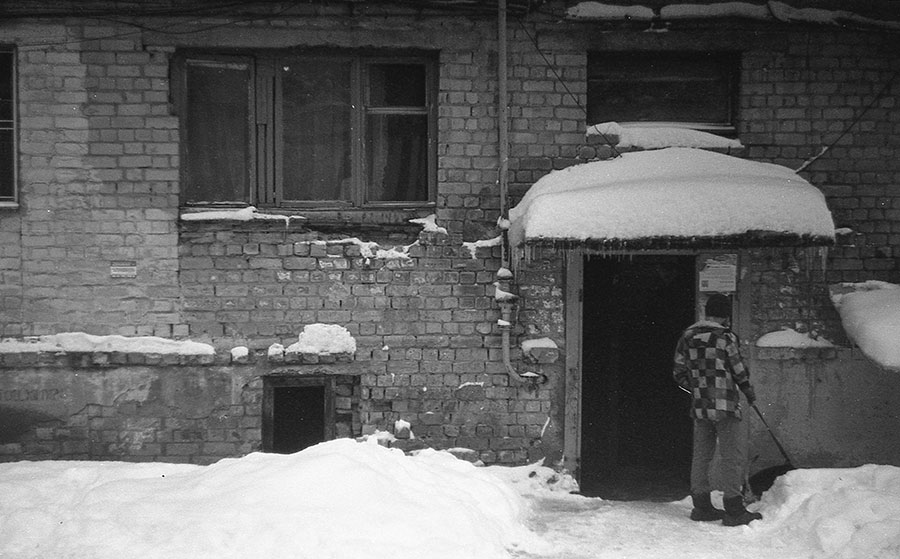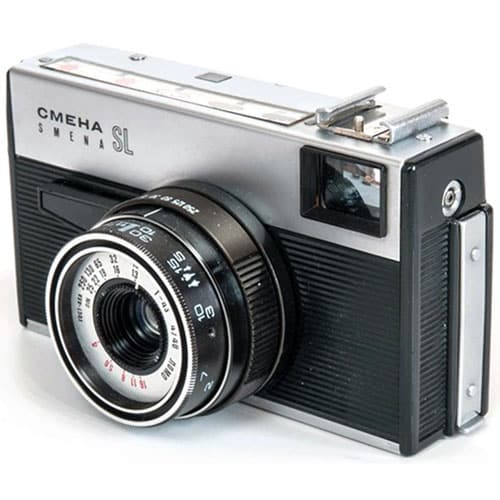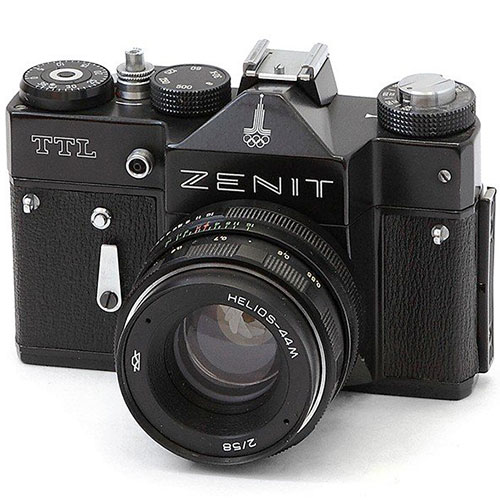Zenit-7
Zenit-7 is a Soviet small-format single-lens reflex camera of developed at the KMZ plant and produced from 1968 to 1971.

The Zenit-7 camera is a high-quality and very complex device in design, which was ahead of its time in many ways (by Soviet standards), which is why it fell into a situation with unreliability that was standard for Soviet cameras and was discontinued quite early.
Zenit-7 Specifications
- Type: 35mm SLR camera
- Manufacturer: KMZ plant
- Production period: 1968-1971
- Format: 24x36cm on 135 film
- Lens mount: Zenit-7 mount
- Lens: Helios-44-7 f2.0/58
- Viewfinder image field size: 22×33 mm
- Shutter: focal-plane shutter with speeds from 1 to 1/100 sec.
- Viewfinder: SLR with non removable pentaprism
- Lighmeter: none
- Flash synchronisation: sync socket “X”, sync speeds from 1/125 s and longer
- Selftimer: none
- Weight: 1100 grams
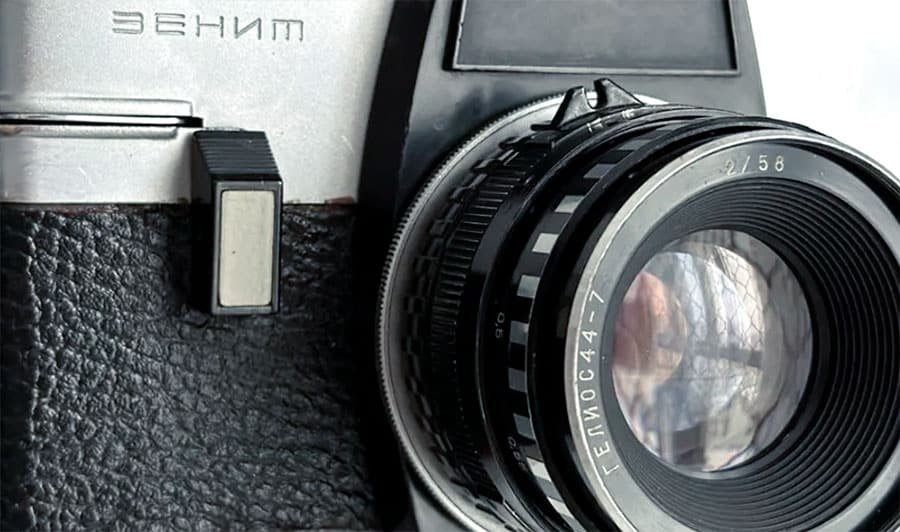
The Zenit-7 camera was conceived as an innovative camera (again, by Soviet standards) and engineers developed a fundamentally new curtain shutter, which has nothing to do with standard SLR shutters from KMZ, such as shutters on Zenit-3m and so on.
The shutter of the Zenit-7 camera beats shutter speeds from 1 sec to 1/1000 sec, which is extremely advanced for the Soviet camera industry of those years.
But as is the case with most other Soviet developments, everything is not quite so simple here, because this shutter was not only very advanced, but also very unreliable, which led to the fact that the Zenit-7 was quickly taken out of production.

The Zenit-7 camera did not have a light meter, but has a special connection for pairing an external light meter. But of course, as is the case with most other Soviet developments, no external ligh meters were created for this purpose.
Moreover, this camera was released only in the amount of 3000 copies, and nowadays it is quite difficult to find a Zenit-7 camera in decent condition at an affordable price.

This Soviet SLR was equipped with a Helios-44-7 f2.0/50 lens, and also had an adapter for the M42 thread mount, which made it possible to attach a large number of Soviet lenses for this thread mount to the camera.
Helios-44-7 is one of the rarest Soviet lenses. It was made for a short time only for the Zenit-7 camera and today it is not so often seen on sale.

Like all other Helios lenses, this one noticeably swirls the background and has good sharpness in the center and quite good at the edges.
Unlike many Soviet cameras, on this device you can change shutter speeds both before and after cocking. Recall that on many Soviet cameras, such as FED or Zenit of the first models, you could not change shutter speeds after cocking the shutter, as you risked breaking the camera.
Conclusion
The Zenit-7 camera is quite an interesting camera for collectors, but in our opinion, it is of little interest to modern film photography lovers, as well as the Zenit-4, since in our time it is very difficult to find this camera at an affordable price and in good condition.
But most importantly, for a more reasonable price, you can buy other, more reliable Soviet cameras that will give good photos and will not break after the first two rolls of film.
ZENIT-7 PHOTOS






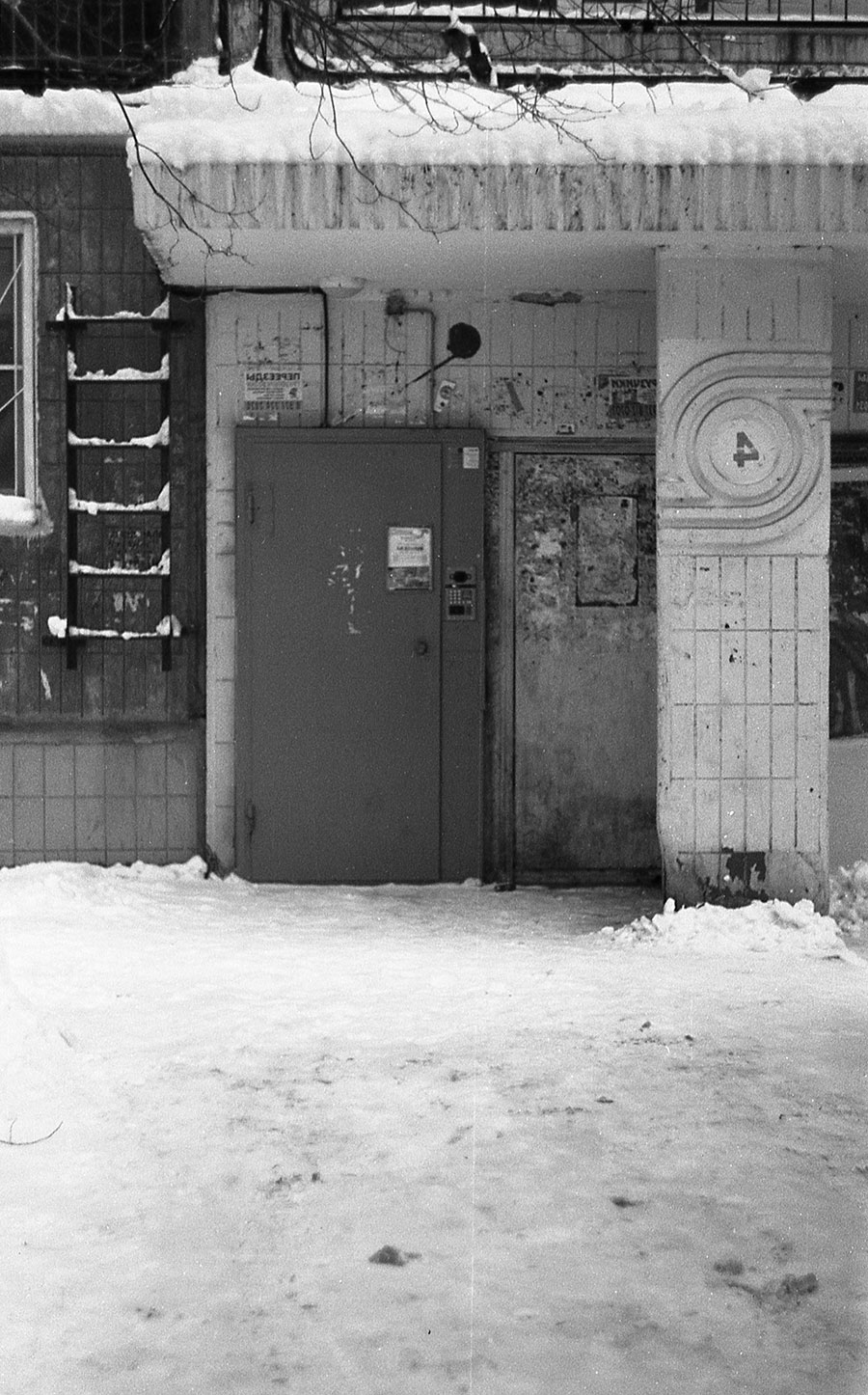
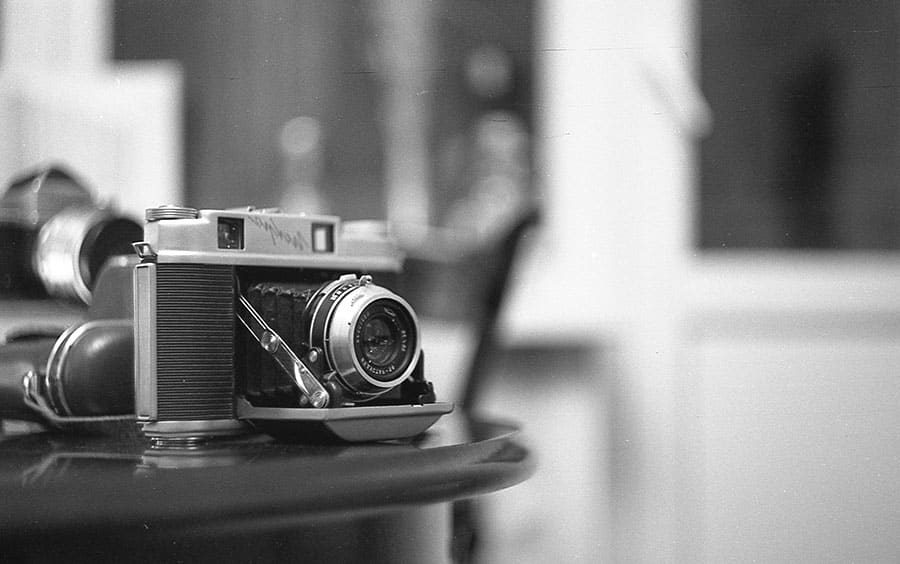

Helios-44-7 f2.0/58, Svema Foto 64

